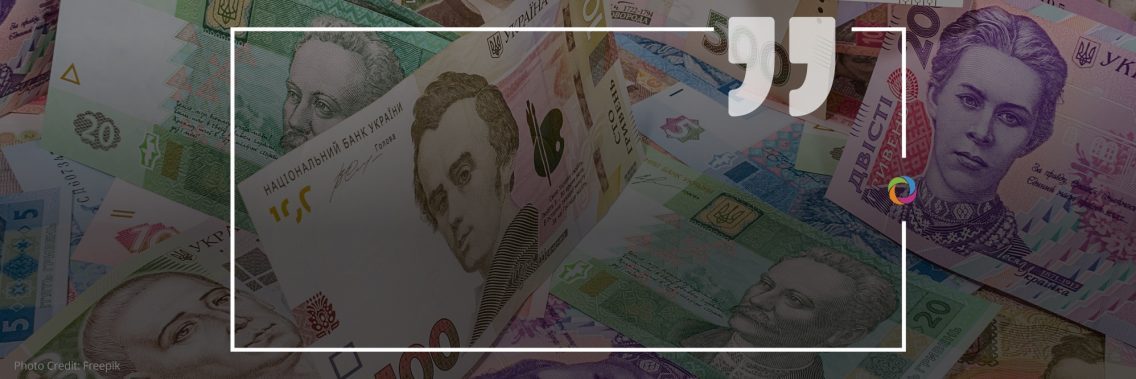In the midst of Russia’s invasion, the Ukrainian Hryvnia has remained surprisingly stable. The country’s National Bank (NBU) has suspended the exchange of Hryvnia banknotes into foreign cash in order to protect its limited foreign exchange reserves. However, over 4 million refugees have had trouble converting their money because banks abroad are refusing to exchange Ukrainian currency or will only accept it at incredibly low rates. How did the NBU cope with the crisis in the first month of the war and what is the impact of a stable Hryvnia on the economy of the country that feeds so many other states in the region? Check out more on this topic below through the points of view of several international financial experts.
Key takeaways
-
-
-
-
-
- Despite the war, the National Bank of Ukraine managed to keep the Hryvnia at an acceptable level against the dollar and euro – all thanks to timely and prompt action.
- Experts believe the NBU benefitted from crucial assistance from the International Monetary Fund and international donors.
- Today, refugees are having trouble exchanging Hryvnia because there are not enough buyers of the Ukrainian currency to create reasonable market rates.
- Ukrainians in Poland are able to convert Hryvnia banknotes into Polish zlotys as part of a program involving the National Bank of Poland.
- Financial experts predict that if the Ukrainian economy does not relaunch soon, the Hryvnia might/will continue to depreciate.
-
-
-
-
How did the National Bank of Ukraine cope so well with the unprecedented crisis and what is the impact of the Hryvnia’s stability on the Ukrainian economy?

“Responding to Russia’s assault, the NBU acted firmly by a) temporarily restricting the issuance of foreign currencies to the public, b) applying a fixed exchange rate regime, c) providing the banking system with access to unlimited unsecured short-term loans, and d) ensuring support from the National Bank of Poland which offered a US$950 million currency swap line to balance the suspension of foreign exchange transactions. This immediate set of actions within 48 hours of the declaration of war prevented currency depreciation, a liquidity crisis, and a massive outflow of international reserves.”

“During the first week of the Russian invasion, the Hryvnia depreciated significantly, being exchanged in neighboring countries (i.e., Moldova) at symbolic exchange rates, mostly due to the threat that the currency might not exist any longer. To prevent the outflow of financial resources, the National Bank of Ukraine has limited the withdrawal of cash and deposits from the banking sector which significantly reduced the panic among the population. Although international trade with Ukraine has mostly ceased for now, and economic activity is paralyzed, a huge amount of the NBU’s resources is being channeled to support the military sector, including the recent issuance of military IGLB (bonds) which generated 4.5 billion Hryvnia and about US$1.6 million .”

“First of all, the National Bank of Ukraine has succeeded in maintaining financial operations despite many of its staff (67 to be exact) joining the country’s armed forces by the end of March 2022. Ukraine’s foreign exchange reserves have been boosted by foreign aid, spearheaded by USD1.4 billion from the IMF, following the strong case presented by Alternate Executive Director Vlad Rashkovan. The Governor of the NBU, Kyrylo Shevchenko, estimates that the total has already exceeded US$20 billion. Donations have also raised substantial amounts.”

“The National Bank of Ukraine coped so well with the crisis due to the efforts of the IMF to strengthen its de jure independence and supervisory capacity. This was crucial before the war (and will also be important after the war) since it contributes to price stability as well as monetary policy implementation, FX management, etc. ”

“Contrary to every economic law, the Ukrainian currency Hryvnia, after a couple of days of panic following the Russian attack on February 24, strengthened by about 3% over the Euro while it can be said that the Hryvnia definitely lost 300% after the events of Maidan in 2013. While in mid-March 2022 on the other side, roubles were turning to rubble with losses exceeding 60% in the same number of hours, the European Central Bank (ECB) was putting in place a plan to force various local European banks to buy the Hryvnia which fled Ukraine along with the refugees (according to Reuters, March 11, 2022).”
What policies should the countries that receive Ukrainian refugees adopt in regards to exchanging the Ukrainian Hryvnia?

“Take the example of Poland which decided to accept the Hryvnia as a convertible currency. The option of using credit/debit cards is a more secure way of payment at acceptable exchange rates and which can be used worldwide. In some EU countries, cash is already almost non-existent. This is the route developing countries (Ukraine, Moldova) should encourage which would have far more advantages, such as transparent transactions, no unofficial payments, less corruption, etc.”

“To date, the refugees have had trouble swapping the Hryvnia because there are not enough buyers for the Ukrainian currency to create reasonable market rates. Poland has set up an initiative to exchange Ukrainian Hryvnia for Polish Zloty. Ukrainian refugees in Poland can exchange up to 10,000 Hryvnia at Polish Commercial Banks at an exchange rate very close to the official UAH/PLN rate. The National Bank of Poland, which then buys the Hryvnia cash from the commercial banks, exchanges this with the NBU. EU officials have been working on a similar currency conversion facility that will be decisive and within legal limits. The prevailing scenario is for the ECB to facilitate and guarantee the conversions that will occur in commercial banks. Should the NBU not be able to enter a swap with the ECB to buy back the Hryvnia because of the war or cannot back up facility with collateral, the EU should absorb the loss. Regardless of the technical execution, the facility needs to be humanitarian, timely (since the refugees are being offered unfavorable exchange rates) and ensure the risks are shared fairly by all members of the Union.”

“Facilitating the easy exchange of Ukrainian hryvnia for local currency – in practice the Euro for countries which have accepted the most refugees – is a way of providing humanitarian aid for refugees, as pioneered by the National Bank of Poland (NBP).”

“The Hryvnia has dropped (we can say ‘only’) 4% against the US dollar since the beginning of 2022 due to the support of the National Bank of Ukraine. Europe must show its trust in the future of the Hryvnia by assisting Ukrainian refugees through a form of repurchase agreement via ECB and the National Bank of Ukraine or through some other way.”
How do you see the future of the Ukrainian Hryvnia if the war doesn’t end soon? And if it does?

“If the economy (manufacturing starts to produce and trade starts to develop) does not relaunch soon, the Ukrainian currency might/will continue to depreciate. International aid only would not be enough to keep the Ukrainian economy alive and the currency strong and stable. Moreover, rebuilding the country would take years and require huge investments, short to medium term perspectives for quick recovery/development would be rather limited.”

“Ukraine heavily relies on the contributions of people and businesses in the country and from all over the international community which is not a sustainable means of funding. The designated special accounts for humanitarian need, and Army support have a balance to meet a few days’ needs, according to the NBU. An undesirable scenario of a long, grinding war would mean that Ukraine’s infrastructure, agriculture, and productive capacity will suffer more substantial damage. With lower agricultural exports, Ukraine will be forced to import most of the basic commodities which will lead to a current account deficit. Under the debt sustainability channel, this would cause strong downward pressures on the Hryvnia. The sooner the war ends, the more quickly the NBU will be able to resume its inflation targeting policy. With a target inflation rate of 5%, having set its current policy rate to 10%, given that the inflation was 10% in January, the prediction would be that policy rates would increase in 2022, if things were normal. Given the above figures and under these extreme circumstances, there would be good reasons to either increase or decrease the policy rate: protect the currency from depreciation and mitigate inflationary pressures or ease liquidity, respectively. This dilemma which will be solved by the date the war ends will form Hryvnia’s fortune.”

“After the initial steep fall on the shock of the news of the Russian invasion, the Ukrainian Hryvnia has remarkably appreciated, slightly sustained by aid and donations. However, given the drastic decline in GDP forecast by the IMF – a minimum of 10% and potential 35% – this will be extremely difficult to sustain, without further substantial and immediate support from the international community.”
Check out more than 300 job opportunities in the Banking, Macro-Economy, and Public Finance sectors here.

